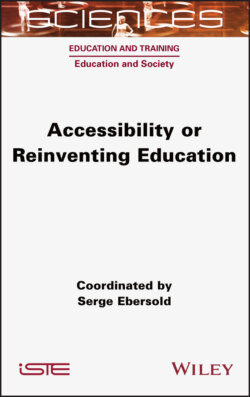Читать книгу Accessibility or Reinventing Education - Группа авторов - Страница 15
1.1. Introduction
ОглавлениеFrom a necessity related to the schooling of students with disabilities, the issue of accessibility has become an imperative, that is, a moral imperative, commanding the school system to be inclusive. This imperative enjoins the school to prevent all forms of exclusion by opening up to all students without distinction on the basis of origin, social background or health condition. It asks the school to place the student at the center of its concerns in order to be as close as possible to his or her rhythms, needs and expectations (Cartron 2013; Plaisance 2013, 2014; European Agency for Special Needs and Inclusive Education 2015). This transformation of accessibility into an imperative invites us not to be satisfied with the usual discursive uses of the term “accessibility” that are induced by the conditions of institutionalization of the field of disability (Ebersold 1997; Larrouy 2006). Following Durkheim, it reminds us that the organization of education systems is consubstantial with the representations that societies make of their cohesion and their adaptation to new conditions (Durkheim 2012).
As a result, the transformation of accessibility into an imperative invites us to associate it with an “official social image” (Castoriadis 1975), that is, with a mode of self-representation of society through which it asserts itself and its norms and values, and legitimizes ways of educating and, more generally, ways of making society. Indeed, the imperative of accessibility is consubstantial with a transformation of school culture. Countering the prejudice that there are a priori limits to the exercise of rights based on individual profiles, it reverses the normative frame of reference underlying school functioning by placing the causes of learning difficulties and, more generally, social difficulties on the shortcomings of school systems before inferring them from the characteristics of individuals: the universal design for learning seeks to compensate for the inabilities and failings of schools and not those of students (Rose and Meyer 2002). In doing so, the imperative of accessibility aims to transform the way in which educational diversity is viewed: it encourages education systems to see it as a resource and to make themselves inclusive by taking into account the variety of contexts and cognitive profiles (Büchel et al. 1995; Paour 1995; Hart et al. 2004; CNIRE 2017).
The imperative of accessibility is therefore consubstantial with the shift in economic, political, educational and social issues that gave rise to it, in particular through the promotion of inclusive schools. This chapter relates this imperative to the forms of normativity promoted by a society based on the knowledge and participation of every individual in economic and social well-being, to the detriment of those born into the wage-based society (Boltanski and Chiapello 2000; Ebersold 2001). It also addresses the instituting effect of the accessibility imperative by considering the meaning given to inclusive education and the principles of vision and division that characterize it in light of the aims that specify the education systems, proposed organizational factors and suggested professional practices. In addition to the analysis of books, reports and articles on inclusive education, this chapter is based on analysis of the principles set out in the inclusive policies promoted by international bodies (European Commission, OECD, United Nations (UN), European Agency for special needs and Inclusive Education, European Parliament), those developed in recent years within the countries of the European Union (Ebersold 2016) and the reforms of the education system undertaken in France in recent decades. This chapter first links the need for accessibility to the reinvention of education systems brought about by the advent of new concepts of social justice, and then characterizes it in terms of the concepts that permeate it. Thirdly, it links the imperative of accessibility to a redefinition of the roles and aims of the school and the establishment of new forms of normativity.
